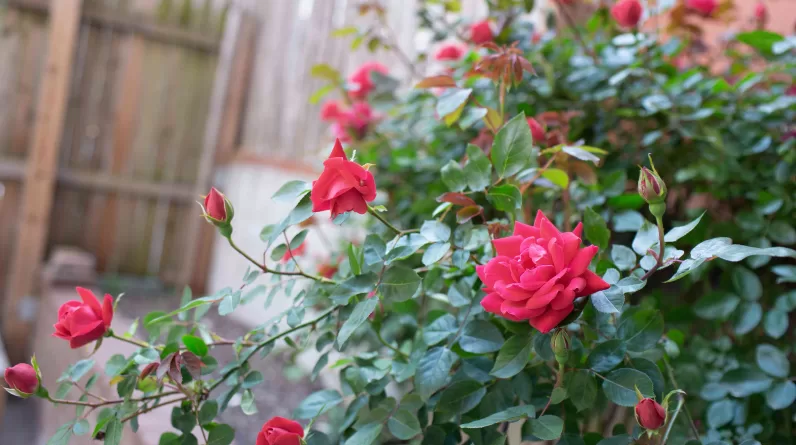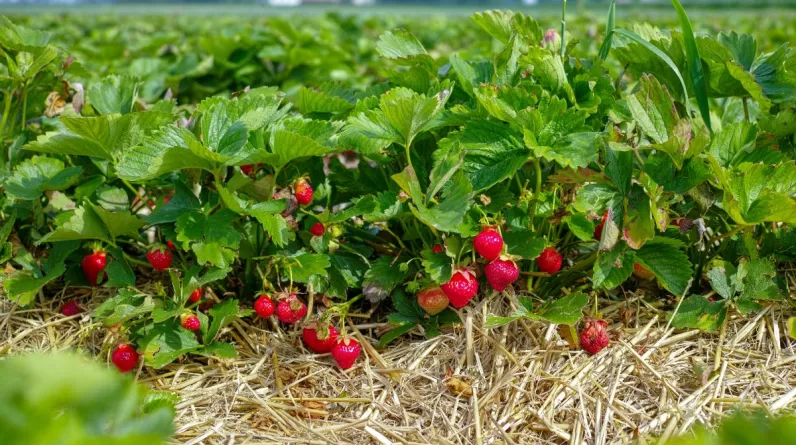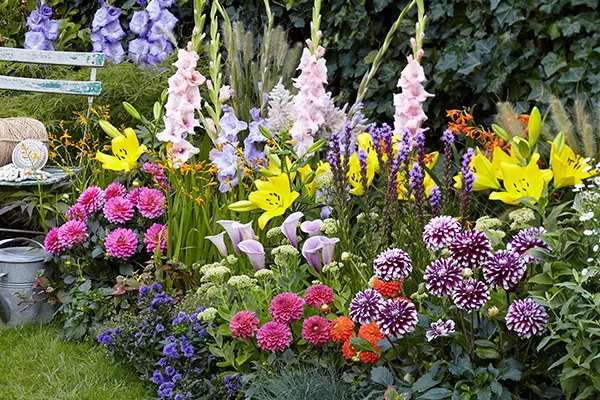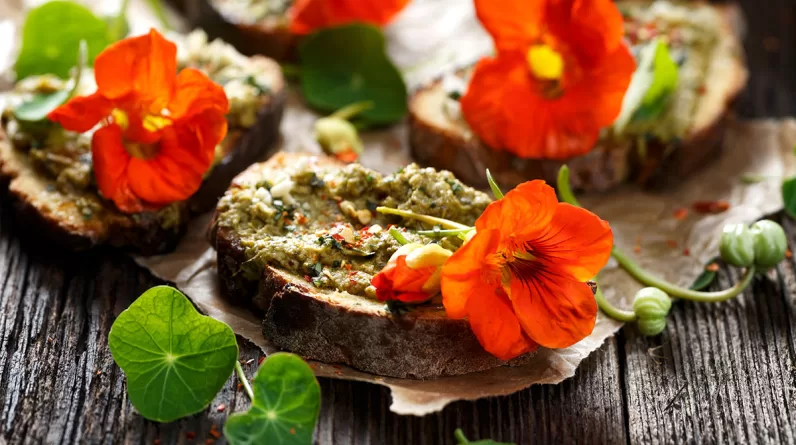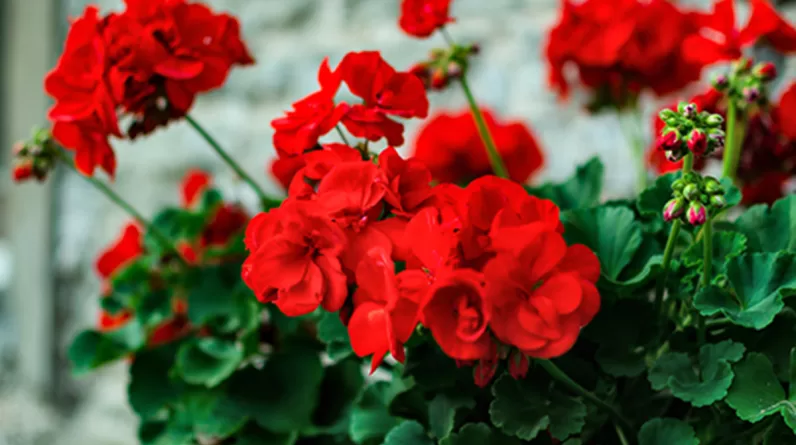If you have a large plot of land around your house, which you do not want to leave fallow, and the prospect of mowing it regularly if you choose to turn it into a lawn does not rejoice, then perhaps the meadow Fleurie is a suitable solution, especially if the time you have to maintain it is limited. Moreover, even for a small space, the flower meadow can also be suitable. Let’s discover its advantages and how to create this colorful meadow at home.
A very natural and very useful flower meadow
In contrast to the well-maintained English lawn, the flowered meadow gives the garden a more “natural” inspiration, rural, wild, and a little cluttered. However, it will be all the more successful if you have chosen simple annual flowers (cornflower, poppy, etc.), perennial flowers ( yarrow, daisy, knapweed, etc.), grasses (fescues, etc.), and regional species, also allowing the plants to grow. spontaneous plants that have an aesthetic interest such as ferns, foxgloves, or perennial geranium for example.
Let’s not forget that the wealth of varieties it contains gives the flower meadow an undeniable asset: an environment very favorable to biodiversity (pollinating insects, birds, hedgehogs, etc.). All these little people are part of the useful auxiliaries for the garden, whether as predators of pests in the vegetable garden and flowerbeds or whether they pollinate, for example, flowers intended to produce fruit.
When to sow the flower meadow?
The sowing season of the flower meadow depends on the seeds it contains which can be annual, biennial, or perennial. If you plan to sow an area of your land in flower meadows, while waiting to create your vegetable garden there the following year or due to lack of time to start your self-construction of a greenhouse, for example, you will have to opt for seeds of annual flowers since your flowering should only last one year: we then speak of flowering fallow, since it does not have a perennial character, unlike a flowering meadow.
Seed mixtures which include frost-resistant annual flowers, even if mixed with perennials, are sown in spring, between March and June, to obtain summer flowering.
However, the ideal sowing period for a flower meadow, composed of biennials and perennials, in most cases, is at the beginning of autumn, in September and October: thus, the hardy perennial species will have time to take root well, to spend a season in the cold which will facilitate their spring germination.
How to sow flower meadows?
Whether it is a fallow or a flowering meadow, neither can be obtained by casually throwing seeds here and there. Preparing the soil is necessary, especially if the land is grassy: in this case, you will have to dig up the grass, unless you have anticipated by smothering the grass covered with a tarpaulin or cardboard for several months.
If the soil doesn’t have to be rich, on the other hand, it must be sunny and a little prepared: virgin soil must be loosened and scratched, before proceeding with broadcast sowing, with a broad and regular movement of the arm and hand. Do not rely on your impression which often consists of having the impression that you are not sowing enough seeds: if you sow too densely, the plants will have difficulty growing correctly and flourishing fully, it is better to follow the instructions in packets of seeds, generally around 6 to 8g of seeds/m².
Then make a second pass with the claw to lightly bury the seeds, before passing the roller then watering in fine rain. Then, natural rain and patience will do the rest!
If you want to transform a wasteland or an old lawn into a flowering meadow, you will especially benefit from cleared areas, earth banks, and molehills for sowing so that the seeds reseed over time and gained ground. You will favor a majority of flower seeds to the detriment of grasses.
What seed mixes for a flower meadow?
The commercial mixtures are varied, it seems that the marketing departments had a lot of fun because the shelves offer something for all tastes and desires: to attract butterflies, bees, ladybugs, pollinators or birds, to repel aphids or slugs, for low or high meadows, for dry or humid soil, for the base of walls or the base of trees, for multi-colored or monochrome tones, etc. In all cases, choose organic seeds.
Then, take a good look at their composition so that the seeds correspond to your wishes but also to native species. Nothing prevents you from supplementing a purchased mixture with wildflower seeds of your choice (poppy, forget-me-not, daisy, etc.).
The mixture should not include too many grasses because, germinating earlier, they will tend to smother the flowering plants and dominate, which will harm the expected effect.
Also, check the amount of annual flowers as they have a short lifespan which will require reseeding the meadow after a year or two unless you want a flowering fallow of annuals.
In general, a balanced mixture of seeds for a flower meadow is composed as follows:
- 60% of flowers to choose according to the nature of the soil, either wet (yarrow, meadowsweet, foxglove, goldenrod, asters, sanguinary, daisy, columbine, etc.), or dry (knapweed, St. John’s wort, yarrow, Matricaria, poppy, oregano, fennel…)
- 25% legumes (lupine, vetch, crimson clover, sainfoin, etc.)
- 15% grasses (red and sheep fescues, wild oats, etc.)
How to maintain a flower meadow?
If you have chosen your seeds carefully so that they are adapted to the nature of your soil and your climate, the flower meadow does not require watering even in the height of summer. You will just have to mow it twice a year, in May, before it reappears for summer flowering, then in October at the end of flowering when the flowers have set seed: to do this, leave the mower in the shelter garden, and use a scythe with a clean cut – if you master the gesture! – will promote spontaneous sowing of seeds, while preserving the small fauna sheltered in the plants.
Let the cutting dry a little on the ground so that the seeds fall to the ground and reseed the meadow. Then, do not let the dry grass fertilize the soil because the flower meadow does not like soil that is too rich: collect it after a few days, to use as mulch at the base of shrubs or other crops, unless you have too much in which case, it can be composted.


